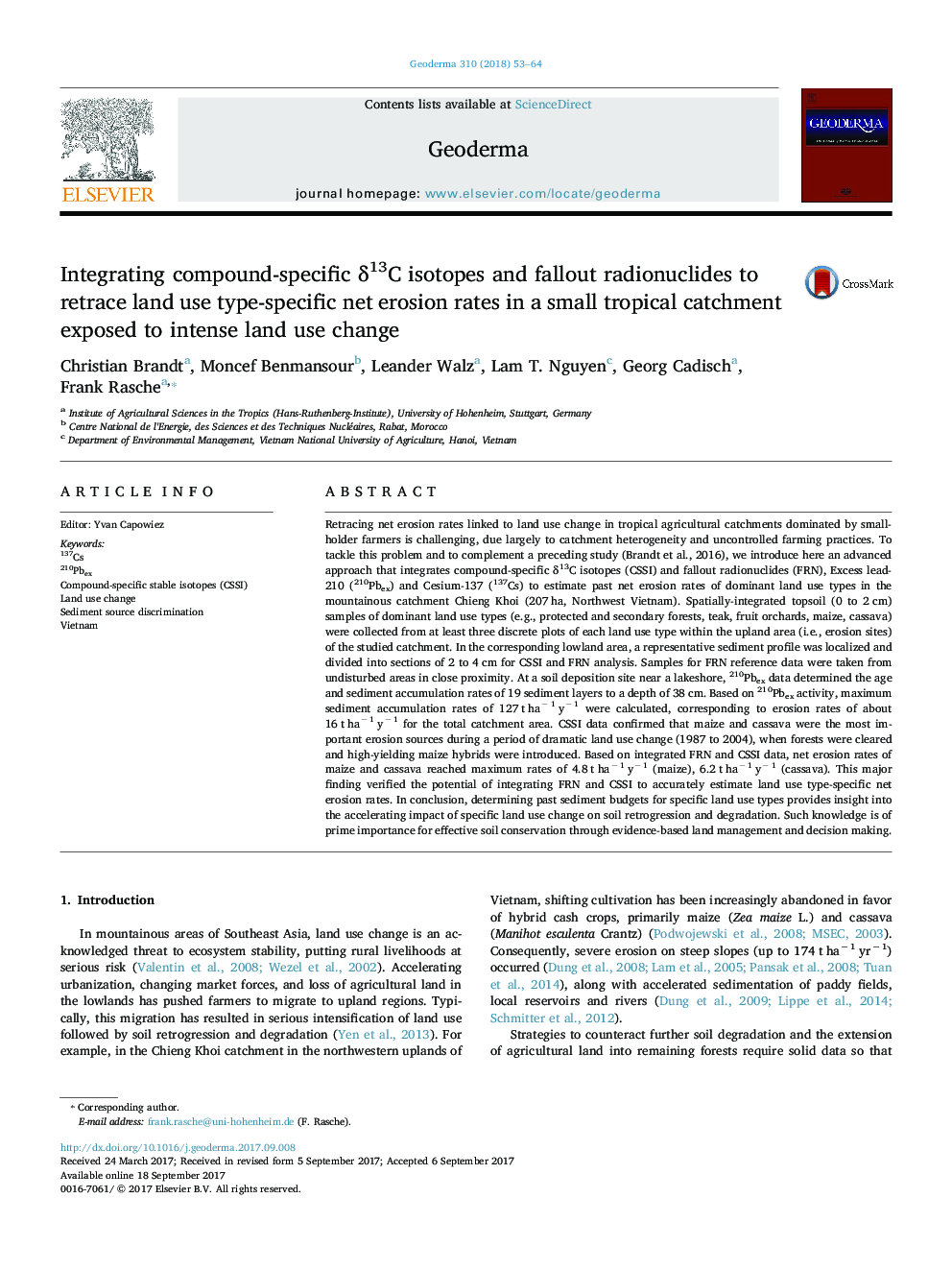| کد مقاله | کد نشریه | سال انتشار | مقاله انگلیسی | نسخه تمام متن |
|---|---|---|---|---|
| 5770359 | 1629407 | 2018 | 12 صفحه PDF | دانلود رایگان |

- FRN - CSSI integration assigned past net erosion rates (NER) to land use types.
- Our approach confirmed rising sediment accumulation rates (SAR) over three decades.
- NER of maize and cassava accelerated during a period of intense land use change.
Retracing net erosion rates linked to land use change in tropical agricultural catchments dominated by small-holder farmers is challenging, due largely to catchment heterogeneity and uncontrolled farming practices. To tackle this problem and to complement a preceding study (Brandt et al., 2016), we introduce here an advanced approach that integrates compound-specific δ13C isotopes (CSSI) and fallout radionuclides (FRN), Excess lead-210 (210Pbex) and Cesium-137 (137Cs) to estimate past net erosion rates of dominant land use types in the mountainous catchment Chieng Khoi (207 ha, Northwest Vietnam). Spatially-integrated topsoil (0 to 2 cm) samples of dominant land use types (e.g., protected and secondary forests, teak, fruit orchards, maize, cassava) were collected from at least three discrete plots of each land use type within the upland area (i.e., erosion sites) of the studied catchment. In the corresponding lowland area, a representative sediment profile was localized and divided into sections of 2 to 4 cm for CSSI and FRN analysis. Samples for FRN reference data were taken from undisturbed areas in close proximity. At a soil deposition site near a lakeshore, 210Pbex data determined the age and sediment accumulation rates of 19 sediment layers to a depth of 38 cm. Based on 210Pbex activity, maximum sediment accumulation rates of 127 t haâ 1 yâ 1 were calculated, corresponding to erosion rates of about 16 t haâ 1 yâ 1 for the total catchment area. CSSI data confirmed that maize and cassava were the most important erosion sources during a period of dramatic land use change (1987 to 2004), when forests were cleared and high-yielding maize hybrids were introduced. Based on integrated FRN and CSSI data, net erosion rates of maize and cassava reached maximum rates of 4.8 t haâ 1 yâ 1 (maize), 6.2 t haâ 1 yâ 1 (cassava). This major finding verified the potential of integrating FRN and CSSI to accurately estimate land use type-specific net erosion rates. In conclusion, determining past sediment budgets for specific land use types provides insight into the accelerating impact of specific land use change on soil retrogression and degradation. Such knowledge is of prime importance for effective soil conservation through evidence-based land management and decision making.
Journal: Geoderma - Volume 310, 15 January 2018, Pages 53-64